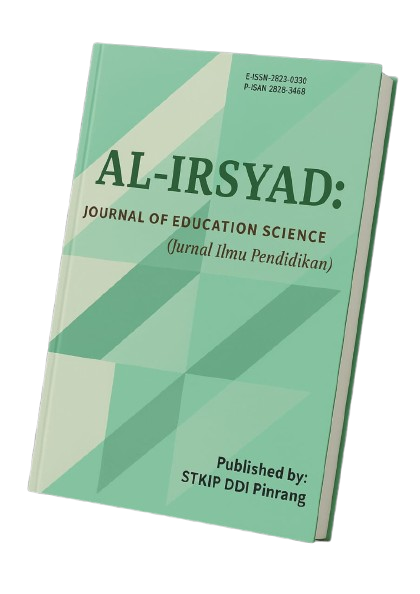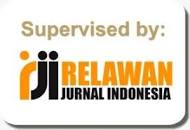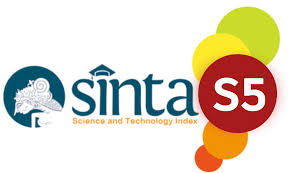INTEGRASI GREEN CHEMISTRY DALAM KURIKULUM PENDIDIKAN TINGGI: TINJAUAN PRAKTIK INTERNASIONAL DAN RELEVANSINYA DI INDONESIA
DOI:
https://doi.org/10.58917/aijes.v4i2.261Kata Kunci:
Green Chemistry, Kurikulum, Pendidikan Sains, Pendidikan Tinggi, Tujuan Pembangunan BerkelanjutanAbstrak
Krisis lingkungan global menuntut pendidikan tinggi untuk mengadopsi pendekatan inovatif yang berorientasi pada keberlanjutan. Green chemistry, yakni perancangan produk dan proses kimia yang mengurangi atau menghilangkan penggunaan serta pembentukan zat berbahaya, menjadi pendekatan strategis untuk menyelaraskan pendidikan sains dengan tujuan pembangunan berkelanjutan. Studi ini memiliki kebaruan dalam mengkaji integrasi prinsip green chemistry dalam pendidikan tinggi melalui pendekatan studi kasus global yang jarang dikaji dalam konteks Indonesia. Penelitian ini tidak hanya menyoroti aspek kurikulum, tetapi juga menelaah dimensi kebijakan, pelatihan dosen, dan kesiapan infrastruktur secara komprehensif. Temuan ini mengisi kekosongan literatur dengan memberikan gambaran menyeluruh tentang tantangan dan peluang implementasi green chemistry di Indonesia. Untuk penelitian selanjutnya, disarankan adanya studi empiris mengenai persepsi dosen dan mahasiswa, evaluasi implementasi pada program studi tertentu, serta pengembangan model integrasi green chemistry yang kontekstual dan berkelanjutan di tingkat nasional.
Referensi
Anastas, P. T., & Warner, J. C. (2000). Green Chemistry: Theory and Practice. Oxford University Press. https://doi.org/10.1093/oso/9780198506980.001.0001
Aubrecht, K. B., Bourgeois, M., Brush, E. J., MacKellar, J., & Wissinger, J. E. (2019). Integrating Green Chemistry in the Curriculum: Building Student Skills in Systems Thinking, Safety, and Sustainability. Journal of Chemical Education, 96(12), 2872–2880. https://doi.org/10.1021/acs.jchemed.9b00354
Barth, M., Godemann, J., Rieckmann, M., & Stoltenberg, U. (2007). Developing key competencies for sustainable development in higher education. International Journal of Sustainability in Higher Education, 8(4), 416–430. https://doi.org/10.1108/14676370710823582
BB GCC. (2023). 2022 Status Report Green Chemistry Commitment. https://www.beyondbenign.org/wordpress/wp-content/uploads/BB-GCC-Impact-Report-FINAL-4.13.2023-1.pdf
Bozell, J. J. (2002). Green Chemistry in Practice. Dalam Handbook of Green Chemistry and Technology (hlm. 338–365). John Wiley & Sons, Ltd. https://doi.org/10.1002/9780470988305.ch14
Braun, V., & and Clarke, V. (2006). Using thematic analysis in psychology. Qualitative Research in Psychology, 3(2), 77–101. https://doi.org/10.1191/1478088706qp063oa
Buckler, C., & Creech, H. (2014). Shaping the Future We Want: UN Decade of Education for Sustainable Development (2005-2014) : Final Report. UNESCO.
Burmeister, M., Rauch, F., & Eilks, I. (2012). Education for Sustainable Development (ESD) and chemistry education. Chem. Educ. Res. Pract., 13(2), 59–68. https://doi.org/10.1039/C1RP90060A
Calvin, K., Dasgupta, D., Krinner, G., Mukherji, A., Thorne, P. W., Trisos, C., Romero, J., Aldunce, P., Barrett, K., Blanco, G., Cheung, W. W. L., Connors, S., Denton, F., Diongue-Niang, A., Dodman, D., Garschagen, M., Geden, O., Hayward, B., Jones, C., … Péan, C. (2023). IPCC, 2023: Climate Change 2023: Synthesis Report. Contribution of Working Groups I, II and III to the Sixth Assessment Report of the Intergovernmental Panel on Climate Change [Core Writing Team, H. Lee and J. Romero (eds.)]. IPCC, Geneva, Switzerland. (First). Intergovernmental Panel on Climate Change (IPCC). https://doi.org/10.59327/IPCC/AR6-9789291691647
Cann, M. C., & Dickneider, T. A. (2004). Infusing the Chemistry Curriculum with Green Chemistry Using Real-World Examples, Web Modules, and Atom Economy in Organic Chemistry Courses. Journal of Chemical Education, 81(7), 977. https://doi.org/10.1021/ed081p977
Day, E. L., Petritis, S. J., McFall-Boegeman, H., Starkie, J., Zhang, M., & Cooper, M. M. (2024). A Framework for the Integration of Green and Sustainable Chemistry into the Undergraduate Curriculum: Greening Our Practice with Scientific and Engineering Practices. Journal of Chemical Education, 101(5), 1847–1857. https://doi.org/10.1021/acs.jchemed.3c00737
D’eon, J., & and Silverman, J. R. (2023). Using systems thinking to connect green principles and United Nations Sustainable Development Goals in a reaction stoichiometry module. Green Chemistry Letters and Reviews, 16(1), 2185109. https://doi.org/10.1080/17518253.2023.2185109
European Commission. (2025a). Priorities of the Erasmus+ Programme—Erasmus+. https://erasmus-plus.ec.europa.eu/programme-guide/part-a/priorities-of-the-erasmus-programme
European Commission. (2025b, Februari 18). Learning for the green transition and sustainable development—European Education Area. https://education.ec.europa.eu/focus-topics/green-education/learning-for-the-green-transition
Fajriyati, P. (2023). Desain dan Uji Coba Penuntun Praktikum Berbasis Green Chemistry Pada Materi Elektrokimia Untuk Kelas XII SMA [Skripsi, UNIVERSITAS ISLAM NEGERI SULTAN SYARIF KASIM RIAU]. https://repository.uin-suska.ac.id/74008/?utm_source=chatgpt.com
Hamidah, N., Prabawati, S. Y., Fajriati, I., & Eilks, I. (2017). Incorporating Sustainability in Higher Chemistry Education in Indonesia through Green Chemistry: Inspirations by Inquiring the Practice in a German University. International Journal of Physics and Chemistry Education, 9(1), 1–7. https://doi.org/10.12973/ijpce/79220
Harahap, S. R. D., & Sutiani, A. (2023). DEVELOPMENT OF A GUIDEBOOK FOR BASED CHEMISTRY PRACTICES GREEN CHEMISTRY IN REACTION RATE MATERIALS. Jurnal Ilmu Pendidikan Indonesia, 11(1), Article 1. https://doi.org/10.31957/jipi.v11i1.2745
Hjeresen, D. L., Boese, J. M., & Schutt, D. L. (2000). Green Chemistry and Education. Journal of Chemical Education, 77(12), 1543. https://doi.org/10.1021/ed077p1543
Inayah, S., Dasna, I. W., & Habiddin, H. (2022). Implementasi Green Chemistry Dalam Pembelajaran Kimia: Literatur Review. Hydrogen: Jurnal Kependidikan Kimia, 10(1), 42–49. https://doi.org/10.33394/hjkk.v10i1.4611
Lancaster, M. (2016). Green Chemistry: An Introductory Text. The Royal Society of Chemistry. https://doi.org/10.1039/9781839168888
Lestari, N. A., Sulistyowati, D., Dellatiani, Y., Irawan, N. Z. P., Fadhilah, A., & Muyassaroh, A. (2025). Implementation of green chemistry approaches in chemistry labs instruction: A systematic literature review. Jurnal Pendidikan Kimia, 16(3), Article 3. https://doi.org/10.24114/jpkim.v16i3.65184
Lozano, R., Ceulemans, K., Alonso-Almeida, M., Huisingh, D., Lozano, F. J., Waas, T., Lambrechts, W., Lukman, R., & Hugé, J. (2015). A review of commitment and implementation of sustainable development in higher education: Results from a worldwide survey. Journal of Cleaner Production, 108, 1–18. https://doi.org/10.1016/j.jclepro.2014.09.048
Mahaffy, P. G., Matlin, S. A., Holme, T. A., & MacKellar, J. (2019). Systems thinking for education about the molecular basis of sustainability. Nature Sustainability, 2(5), 362–370. https://doi.org/10.1038/s41893-019-0285-3
Pertiwi, A. M., & Wahyuningrum, D. (2024). The Development of Green Chemistry Teaching Material Based on Organic Compound Synthesis. EduChemia: Jurnal Kimia Dan Pendidikan, 9(2), 132–148. https://doi.org/10.30870/educhemia.v9i1.24452
Rahma, R., Jusniar, J., & Auliah, A. (2024). Pengembangan Modul Ajar terintegrasi Green Chemistry berorientasi Project Based Learning untuk meningkatkan Kemampuan Berpikir Kritis Siswa SMA (Studi pada Materi Pokok Kesetimbangan Kimia). ChemEdu, 5(3), Article 3. https://doi.org/10.35580/chemedu.v5i3.64626
Rauch, F. (2015). Education for Sustainable Development and Chemistry Education. https://doi.org/10.1039/9781782621942-00016
Rockström, J., Steffen, W., Noone, K., Persson, Å., Chapin, F. S., Lambin, E. F., Lenton, T. M., Scheffer, M., Folke, C., Schellnhuber, H. J., Nykvist, B., de Wit, C. A., Hughes, T., van der Leeuw, S., Rodhe, H., Sörlin, S., Snyder, P. K., Costanza, R., Svedin, U., … Foley, J. A. (2009). A safe operating space for humanity. Nature, 461(7263), 472–475. https://doi.org/10.1038/461472a
Steffen, W., Richardson, K., Rockström, J., Cornell, S. E., Fetzer, I., Bennett, E. M., Biggs, R., Carpenter, S. R., de Vries, W., de Wit, C. A., Folke, C., Gerten, D., Heinke, J., Mace, G. M., Persson, L. M., Ramanathan, V., Reyers, B., & Sörlin, S. (2015). Planetary boundaries: Guiding human development on a changing planet. Science, 347(6223), 1259855. https://doi.org/10.1126/science.1259855
Sterling, S. R. (with Internet Archive). (2001). Sustainable education: Re-visioning learning and change. Totnes : Green Books for the Schumacher Society. http://archive.org/details/sustainableeduca0000ster
UNESCO. (2024). Education for sustainable development: What you need to know. https://www.unesco.org/en/sustainable-development/education/need-know
Wals, A. E. J. (2010). Mirroring, Gestaltswitching and transformative social learning. International Journal of Sustainability in Higher Education, 11(4), 380–390. https://doi.org/10.1108/14676371011077595
Yin, R. K. (2018). Case Study Research and Applications: Design and Methods, 6th Edition. SAGE Publications, Inc. //opaclib.inaba.ac.id%2Findex.php%3Fp%3Dshow_detail%26id%3D2642%26keywords%3D
Zuin, V. G., Eilks, I., Elschami, M., & Kümmerer, K. (2021). Education in green chemistry and in sustainable chemistry: Perspectives towards sustainability. Green Chemistry, 23(4), 1594–1608. https://doi.org/10.1039/D0GC03313H
Unduhan
Diterbitkan
Cara Mengutip
Terbitan
Bagian
Lisensi
Hak Cipta (c) 2025 Sri Magfirah HS, Herlina Sattuang, Riska Wulandari, Nur Aeni, Azmalaeni Rifkah Ansyarif

Artikel ini berlisensi Creative Commons Attribution 4.0 International License.























